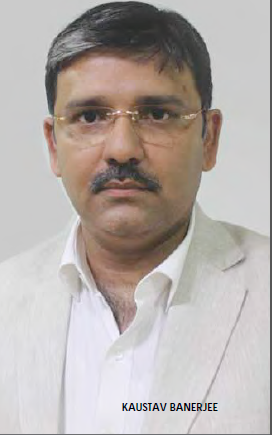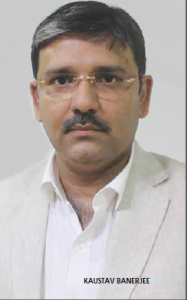
 Kaustav Banerjee,
Kaustav Banerjee,
Country Manager,
St Jude Medical
When we talk about affordability, we must also focus on technology that can make healthcare cost-effective, Says Kaustav Banerjee, in an interview with Mohd Ujaley, ENN
You have facilities and operation in 10 countries and your products are being sold to many countries. How has been your experience in India so far?
India is a very exciting market for various reasons. Indian market is uninterrupted in medical technologies. There are several challenges in terms of patient access. When I talk about access it means therapeutic access. First access relating to awareness, second geographical access because most of the development happens around metro cities and the third challenge is affordability. We, as an organisation are extremely successful in India over the period because we have always been introducing innovative technologies which reduce the cost of entire medical system. So, if you look at St Judes medical products they are available in India through many institutes since 1994. St Judes valves are always termed as the gold standard valves.

How has been your experience with tier II cities?
We have sales offices in five cities. We have access all over the country both in tier-I and tier-II cities through a set of service providers and our own people who are residents of many of the smaller cities. Tier-II cities are growing very fast. The main disadvantage of the tier-II cities was that the patient had to travel long distances to get treated and finding a place to stay in a metro That, now that has been addressed, as we can see super-specialty hospitals coming up in tier-II cities. Also, we have created infrastructure for our physicians and customer care. We are also investing on training and education of physicians in tier-II cities. The response has been very encouraging.
The study that we did with our Fractional Flow Reserve (FFR) technology in India demonstrated that each patient would have saved ` 67,000 rupees in treatment. Thats a phenomenal saving and this is one of the technologies that we have introduced
For a developing country like India, an affordable healthcare on a universal basis is paramount. How organisation such as yours can provide technologies to improve patient outcomes while also reducing the cost of healthcare?
When we talk about affordability, we must also focus on how to make healthcare cost effective for the patients. The study that we did with our Fractional Flow Reserve (FFR) technology in Indian demonstrated that each patient would have saved Rs 67,000 rupees in treatment. Thats phenomenal saving and this is one of the technologies that we have introduced. Secondly, in technology enabling cost-effectiveness, you have to look at the overall cost of the therapy which includes initial cost of treatment, the continuing medication, chances of rehospitalisation and if you aggregate all of that you will get to see some of the technologies that we have introduced, have significantly reduced the cost. Our Quadripular Technology which has four electrodes versus the conventional one or two has significantly reduced common complications. The longevity of the device is also important because of the tenure of the treatment. Our pacemakers have highest longevity in the marketplace.

In Health IT both operating profit and net sale have slightly gone down in last couple of years, why it is so?
There are two sides of it. From overall business standpoint, there is dependence on US and European markets. There have been challenges in these markets. The international division contributes more than 50 percent. If there are challenges in those markets, it will reflect. If you look at the general growth rate of those markets, its been on the lower side. However, if you look at Asia, then there has been growth.
We have programmes related to awareness and developing the skills of cardiologists and cardiac surgeons to do different kind of therapies that are available worldwide. On the other side we are also making investments on identification of the disease and their diagnosis
cardiologists and cardiac surgeons to do different kind of therapies that are available worldwide. On the other side we are also making investments on identification of the disease and their diagnosis
We understand for St. Jude Medical, USA is the biggest market, alone contributing to 47 percent in net sale. How much is the contribution of India?
Indias contribution is continuously growing in this market. We are growing faster here. Indias challenges are different. India is more about addressing the barriers to access like affordability, geographical locations etc. We are working very closely and making investments on awareness. We have programmes related to awareness and developing the skills of cardiologists and cardiac surgeons to do different kind of therapies that are available worldwide. On the other side we are also making investments on identification of the disease and their diagnosis.
Are you also focusing on medical students who are going to lead the healthcare system in the country?
Yes, we have programmes for MBBS students. These are structured programmes wherein we give them experience of different kind of device therapies by bringing in experts from that particular field. We do this programme three to four times in a year across the country so that the medical students from the entire country can benefit.
What are the major challenges you see in India?
The major challenge is health infrastructure which I believe is improving but yet to catch up with the global standard. Total number of beds, number of nurses and doctors are those factors which will significantly improve the health infrastructure. Unless these factors are increased, the bottleneck will continue to be there. The good part is that government has made lot of conscious efforts to invest on medical colleges, initiatives being taken to build AIIMS like institutes which will help tremendously. All the large hospitals in India are building new hospitals or acquiring one and increasing the capacity.
Be a part of Elets Collaborative Initiatives. Join Us for Upcoming Events and explore business opportunities. Like us on Facebook , connect with us on LinkedIn and follow us on Twitter , Instagram.












